What Greece Meant to Me
December
Master’s Musings, June 2025
What Greece Meant to Me
0:00
/
0:00
Master’s Musings
 Just a quick word before I begin. The essay that follows is a lot more personal than what I usually write. No lie – some of it is me doing therapy on myself! But I hope it’s more than that. What I’m hoping to demonstrate here is something like “living evolutionary astrology” – an approach not just to our craft, but to life . . . one where we let the symbols interact with the rest of the clues that experience gives us, letting them help us in our struggle to actively penetrate more deeply into the reality of the psyche – yours and mine!
Just a quick word before I begin. The essay that follows is a lot more personal than what I usually write. No lie – some of it is me doing therapy on myself! But I hope it’s more than that. What I’m hoping to demonstrate here is something like “living evolutionary astrology” – an approach not just to our craft, but to life . . . one where we let the symbols interact with the rest of the clues that experience gives us, letting them help us in our struggle to actively penetrate more deeply into the reality of the psyche – yours and mine!
My column for September 2024 was titled “Greece, The Moon and Me.” In essence, it was about how I was feeling spooked about our then-upcoming Greek adventure. No need to repeat all those astrological details here. Suffice to say that fifty years earlier, with Pluto opposing my Moon, the door to Greece slammed in my face. Now, with Pluto sextiling my Moon, it was opening again. Mix a trip to a foreign land with unresolved Pluto issues and you can see why I felt nervous. Let me add that I have a Pluto/Descendant astrocartographic line running through Greece and you get the picture: as Michelle and I boarded the flights to Athens, something karmic was definitely afoot for me. Skeletons in my psychic closet were beginning to stir.
With my natal 12th house Scorpio south node dead-square my Mars, any evolutionary astrologer could see that some of that ripening karma would make a good horror movie. Toss in the fact that transiting Pluto is currently conjuncting that Mars while squaring the node, and my chart was locked and loaded for something pretty intense to happen. Should I get on that airplane at all?
I try never to let astrology scare me, but maintaining that good attitude took some work this time.
Right on schedule, a month before we left for Greece, I basically went blind in my right eye. I had a sudden retinal detachment. I’m fortunate to be living in the age of lasers when such a thing can be fixed, but it’s still a long, difficult process. As I write these words, I’m still unable to see properly and I’m facing a second and third eye surgery. Karma? Since my early thirties, I’ve been aware that I was intentionally blinded in a prior life. My first inkling of it happened when a very gentle eye doctor tried to fit me with contact lenses. That was the only time in my life when I’ve experienced a literal cold sweat. My reflexes simply would not allow it.
(Mars squaring a south node often suggests unresolved past life issues around being hurt by some kind of violence. Further focusing that idea, our five senses are symbolized by both Mercury and the 3rd house. That’s me – in my chart, Mars is separated from Mercury by about one degree and they’re both in the 3rd house. Both planets also make a square to the south node nearly exactly. A very literal interpretation: violence involving the eyes and ears!)
Why would anyone want to blind me? Well, Mercury and the 3rd house are not only about the five senses – they’re about speech too. That Mars is in rebellious Aquarius, and since Mars rules my south node, it represents me in the prior life. Putting all these pieces together, it’s pretty clear that my big mouth once got me into trouble with some nasty characters.
So with transiting Pluto triggering all of that, I arrived in Athens as a one-eyed man. Mister Cyclops.The lack of normal binocular vision made everything blurry. Having no depth perception meant walking on uneven ground was difficult. Going up and down stairs was treacherous. Because of my hearing loss, I do a lot of lip-reading – but bad vision made that harder. And if you’re from the USA, just try lip-reading someone “speaking Australian!” Because their words sound different, their lips are moving differently as they form them. During our whole Greek adventure, I probably understood about half of what was said to me. As you can imagine, that’s a trigger for constant low-level stress. Because of the surgery and my eye problems, I also felt old and weak – and paradoxically both isolated by not being able to hear and yet dependent on others because of not being able to see.
All of that makes simple psychological sense in the present tense – but with Pluto and the nodes in the mixture, something far deeper was happening. This was not the first time that I’d had those feelings. They were surfacing again. It was time to revisit them, and perhaps to make a more conscious response to them.
Remember: it’s the south node of the Moon that we are talking about. What reincarnates most directly is what the prior life felt like.
TWO QUICK IMAGES
At Mycenae, I made my way up a hill fairly easily, but coming back down the other side was rough because it turned out to be a lot steeper. To avoid stumbling, I was taking baby steps. One of our class members – Gabriele Ranfagni, from Italy – kindly saw my plight and let me steady myself with a hand on his shoulder as we descended. Talk about deja vu! I experienced a distinct emotional memory of being a blind man being led by a friend. I don’t believe this was the first time that Gabriele ever helped me walk either. Later I learned that he has the south node in Taurus and conjunct his Moon, all opposite my own south node by sign. In the formal language of evolutionary astrology, the face he presented to me in a prior life was a solid, steadying, nurturing one. Once again the present echoed the past. I was asking the universe to set everything up again, including the same cast of characters. I needed another look at it.
In times when the nodes are stimulated, we meet people we knew in prior lifetimes. Had Gabriele actually been there for me when I was newly blind many centuries ago?
My second image is more embarrassing. As I walked around in Athens with our students, it was hard for me to keep up their pace. I was struggling to not trip over the uneven sidewalks. A good friend tried to take my arm to steady me, but I actually didn’t want that help since it threw my balance off even more. I was afraid that despite her good intentions she would unwittingly make me fall and that I would bring her down with me. When I asked her not to do that, she playfully teased me about how “Capricorns can’t accept help” – which of course contains a kernel of truth. But I was preoccupied with trying not to trip. Uncharacteristically, I snapped at her, and she didn’t deserve that.
In times when the nodes are stimulated, we experience distorted or exaggerated emotional reactions. Feelings from the past loom up out of the psychic depths. If you’re mindful enough to notice, those exaggerations are a certain sign that you are re-experiencing an old hurt – and that you can possibly now respond to it more consciously.
TWO THINGS I REALLY DON’T WANT TO WRITE ABOUT
When Pluto knocks on your door, unconscious material is trying to become conscious – that’s our axiom. But why was it made unconscious in the first place? Naturally the answer is because the perception was unacceptable to the conscious mind – too threatening to our egos or our self-image for us to integrate it. There’s a sure sign that you are on the right track with surfacing karma: you notice that you’d rather do anything – go to the dentist or clean the house – than think about it. While I was in Greece, synchronicity dished up two examples of exactly this sort of resistance in me. In my original draft of this essay, I didn’t include them – the Dark Side of the Force almost won. As you read these two tales, you may wonder why it was hard for me to write about them – they’re actually pretty simple and not really so embarrassing. Again, the answer is not in the stories themselves – it’s in the way they resonate with something unresolved from long, long ago.
Here’s the first story. In Athens, Michelle and I were ripped off by a taxi driver. I’ll spare you the details, which are as tawdry as most crimes. The essence of it is that I trusted him and he used that trust to trick me. How many taxi cab rides have I taken in this lifetime? I’ve never had any trouble, so my mindset was one of trust and normalcy. As soon I realized what had happened, my mind immediately leapt ahead – I could see that if I challenged him, it would quickly escalate into a police situation and that the police would side with him. Somehow I just knew that – or felt that I did. He drove away and I was out a pile of Euros.
Why did this petty little crime happen? Remember: my astrocartographic Pluto/Descendant line runs through Greece. The Descendant – or cusp of the 7th house – is always about trust, so there’s the connection. In terms of the karma that was ripening for me in Greece, one piece of it is about me trusting the wrong people in a prior lifetime. It’s about betrayal. What about my certainty that the police would turn against me? Does that reflect a prior life situation in which “the authorities” were corrupt and arrayed in opposition to me? I think so.
Clues, clues, clues . . . because of synchronicity, they are everywhere. And during Plutonian times, your own mind doesn’t want to register any of them.
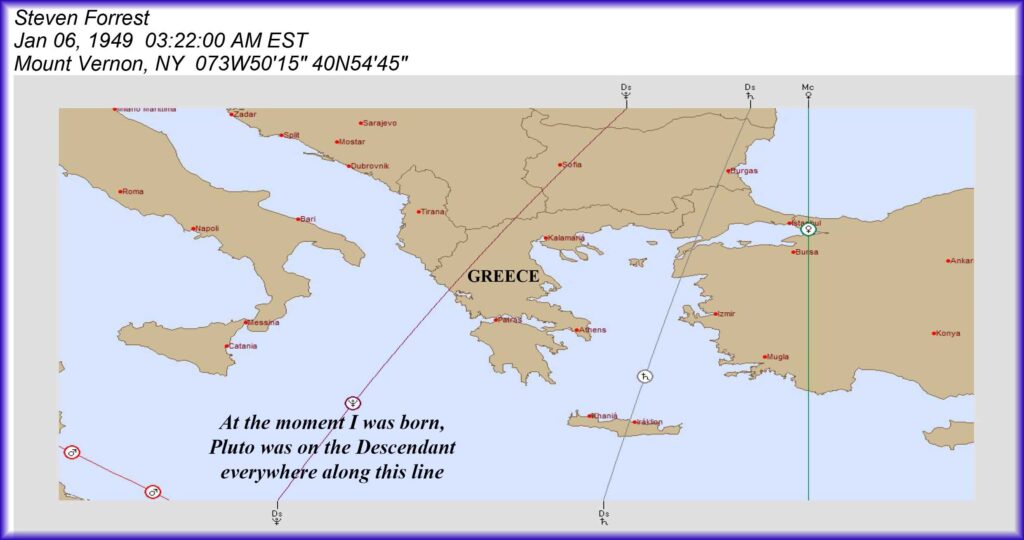
The second story is a weird one. A woman whom I don’t know emailed me about an astrological theory she had developed. She wanted to send me some of her writing. Because of my public visibility, that kind of request happens quite a lot. I’m generally happy to help. Oddly, she insisted that she wanted me to be the one to write about her ideas. That’s something I had never heard before. In any case, the next thing I knew she sent me a second, rather “superior,” email denouncing me for being “mired in this world.” It felt like she was trying to position herself as my salvation.
A self-appointed guru whom I had never met arrives unbidden with a plan for my future, claiming detailed knowledge of “my case?” What was she thinking? Me, “mired in this world?” My first instinct was to respond to her by pleading guilty as charged – and then asking, “and you’re not?”
But I didn’t. I didn’t respond at all. And at this point I’ve not heard back from her or received the pages she was planning to send me.
Weirdly, the word she used for the God she was quoting on my behalf was “the Monad” – a term rarely heard outside of the Gnostic traditions. Stay tuned. You’ll hear about Gnosticism again very soon. Clues, clues, clues . . .
So what was that situation all about? I’d mark the whole interaction as strange but forgettable, except that it had Pluto’s eternal fingerprints on it. What I mean is that I clung to it, worried about it, planned responses in my head . . . it carried that tell-tale extra psychic charge, in other words. That’s Pluto’s signature. That little episode is another piece of my karmic puzzle, another echo from two thousand years ago. I suspect there were “spiritual” people back then who were standing in judgment of me, “worried about my soul” – the difference was that back then their judgement had far sharper teeth. This strange woman may have actually been one of them. Again, during times of nodal stimulus, we meet the very souls with whom we have unresolved karma.
PLUTO AS NODAL RULER
So far, when I’ve spoken about the ruler of my south node, I’ve been referring to Mars. As always, I feel it’s important to honor the classical rulerships. But what about my natal Pluto, Scorpio’s modern ruler? It too would have to be part of my karmic story. Pluto not only rules my south node, but it is also in a mysterious quintile aspect to it, while forming a tight quincunx to my Sun.
In our formal analytic methodology, as one of the planetary rulers of my south node, Pluto represents me in a prior life. It’s in the 9th house. Religion? Travel? It’s in Leo – was I in some position of power, “performing” somehow? Putting two and two together, was I preaching far from home? (Note the present-day corroboration: I was doing exactly that in Greece!) Add my node-ruling Mars and how my mouth got me into trouble – was what I was preaching viewed as “Aquarian” blasphemy by people who were bloody-minded enough to punish me for it? Did my intense, not-so-diplomatic, Plutonian nature press their buttons?
Figuring out who we were in past lives is fraught business for many obvious reasons. Our ace in the hole is that we have a variety of methods for accomplishing it. Evolutionary astrology is only one of them. Intuition and dream work naturally play a big role. So can hypnotic regressions. And then there are psychics – and the good ones can be uncanny in their accuracy. Two such gifted souls have had a real impact on me in ways that are relevant to the story I am telling here.
One was my root spiritual teacher, Marian Starnes. In my early twenties, she foresaw that I would face hearing loss. She said it was because I couldn’t bear to hear the screams of people who were being tortured. (There’s a long story there.) It was many years before I realized she had gently nudged me toward a memory of having once been tortured myself and not being able to stand my own screams. I am pretty sure that being blinded was part of that experience – and that this particular bit of unpleasant karma that was now surfacing in the form of my retinal detachment.
A second psychic carries us deeper into the story. She is a woman whom I’ve never actually met in person. Her name is Mary Roach and she works in informal association with the Edgar Cayce Center in Virginia Beach. My partner Michelle is an old friend of hers. When Michelle and I were falling in love, she had a reading with Mary in which she asked about me. Mary was very specific. Among other things, she said that I had been a Gnostic Christian sometime during the first couple of centuries A.D. In other words, almost two thousand years ago, I had been a traveling spiritual teacher banging my head against the wall of Roman pagan culture, talking about the teachings of Jesus.
If you know the Bible at all, you’ve probably bumped into Saint Paul’s two letters to the Corinthians. Perhaps these beautiful words are familiar to you: “If I speak in the tongues of men or of angels, but have not love, I am only a clanging cymbal.” While in Greece, we actually stopped for coffee in Corinth – it’s the same place Saint Paul visited. The point is that as Christianity spread outward from the environs of Jerusalem into the larger Roman Empire, it first seeped into the lands we now know as Greece, Turkey, and Italy – where it was not always welcomed. As Mary Roach divined, I was part of that perilous evangelical process.
Mary specifically mentioned Gnosticism, echoing that weird woman’s use of the term “Monad.” (Say: NOSS-ta-siz-im) That was a real goose-bumper for me. I studied Gnosticism fairly deeply as I was earning my degree in Religion at the University of North Carolina. It resonated with me because it is in part an astrological religion. Early Christianity was extremely diverse. Gnosticism eventually was declared heretical and basically disappeared – only to be reincarnated, more or less, in the form of evolutionary astrology. That’s a big oversimplification, but it contains a germ of real truth. Suffice to say that one thing I took home from our trip to Greece was the realization that I need to revisit Gnosticism and write about it. Look for an article down the road.
As we contemplate these various clues, you can feel the exact nature of my former-life “heresy” coming into focus. Many of these pieces of the puzzle were in my mind before we landed in Athens, but they hadn’t yet jelled into such a clear understanding.
Let me give you one more piece of the puzzle.
ME AND GREEK MYTHOLOGY
With the group on this trip, we visited a spectacular site called Epidaurus, famous for its huge amphitheater. While there, Lisa Jones beckoned several of us down an overgrown path at the very edge of the historical area, one that seemed to be leading nowhere. There we came to the Propylaia – a sacred structure built around 300 B.C., it was once the entrance to the precinct dedicated to Asklepios, the god of healing. Not much is left there today except a stone floor and an incredible vibe. A group of about fifteen of us sat down on the stones and meditated quietly.

As I sat there letting the energy of the Propylaia wash through me, a lightning bolt of insight entered my mind. The majority of psychologically-oriented astrologers, at least of the deeper sort, love Greek mythology and use it all the time to cast light on the symbolism of signs and planets.
Not me! I’ve never paid much attention to it at all.
I’m not totally ignorant of those myths nor am I opposed to using them, but I have never had the slightest desire to employ the Greek myths in my astrological practice or my teaching. In the FCEA curriculum, you’ll see only a few hints of it, mostly in connection with the asteroids and Eris. Suddenly as I sat there meditating on those ancient stones, I understood why. As an early Christian missionary, what was I preaching against? Obviously the answer is the old pagan cosmology – Zeus, Hera, Apollo, Poseidon, and the rest of the gang. Apparently, I still harbor a certain resistance to them now, two thousand years down the road.
At that time two millennia ago, those gods and goddesses were dead. Roman citizens were required by law to make sacrifices at their various temples. It wasn’t voluntary or joyful. People just didn’t feel it anymore. That old religion, which had once been vibrant, had become as empty an experience as what happens in many churches today. Back then, if you wanted to experience real ju-ju, if you wanted to catch fire with the holy spirit, what you needed was the new magic: Jesus Christ. As ever in history, these collective visitations of holy energy come and go – and nothing makes them dry up faster than rigid theology, a deadening, bored priesthood, and bureaucratic institutions. That’s true whether we are talking about the ancient Greek pantheon or what’s happened over the past fifteen centuries to the reality of Jesus and the original fire of the Christian path.
SO WHAT DID I LEARN IN GREECE?
I’m still processing all this – and thanks, by the way, for indulging me. I’m obviously talking a lot about myself in this edition of Master’s Musings. Writing about it is a healing process for me. As always, I hope that in telling my own story, the basic principles of evolutionary astrology shine through in a humanized way. I’m also always happy to try to illustrate how evolutionary astrology can play an active role in helping us examine our own lives. It can take us so much further than, “uh oh, here comes Pluto.” I am also sure that I still have more to uncover – Pluto will be hanging around with me for quite a while yet – but right now, I’m focusing on four practical lessons.
None of us can make it on our own. Humans need each other. Long ago, such interdependency was forced on me in a cruel way. I resist it today because I associate it with bitterness, cruelty, and betrayal. I need to work on that!
Despite my age I generally do not feel old, but old is what I felt in Greece. I need to better prepare myself for that reality.
I’ve got a ton of issues around my eyes. I don’t like anyone or anything near them. Thanks to astrological understanding, I am consciously focussing on the good will, competence, and caring of my eye surgeon, trying to let her help me replace fear with the trust she deserves. Thank you, Dr. Camille Harrison – who incidentally, it turns out, was a Classics major (!). Like most doctors today, she always needs to keep one eye on the clock, but we had a five minute discussion about Saint Augustine. Karma!
I really need to revisit Gnosticism. I’ve always said that I felt that I was “remembering” evolutionary astrology – that I felt that the basic system was ancient even though I had no proof of that. I think the proof has been sitting there right in front of me for fifty years, but I was unable to see it because it was locked up behind this unresolved – and unconscious – prior life wound.
So thank you, Greece and thank you, Pluto! Thank you Lisa Jones and Catie Cadge for making this journey a reality. Thank you to the 85 people from 21 countries who came to Athens and poured their good energy into the classroom. I surfed the waves of your life-force for four days of teaching and, given my weakened condition, I don’t think that I could have kept it up without your love and your soulful, intelligent attention.
God bless our tribe and the sacred flames we feed!
Steven Forrest
June 2025




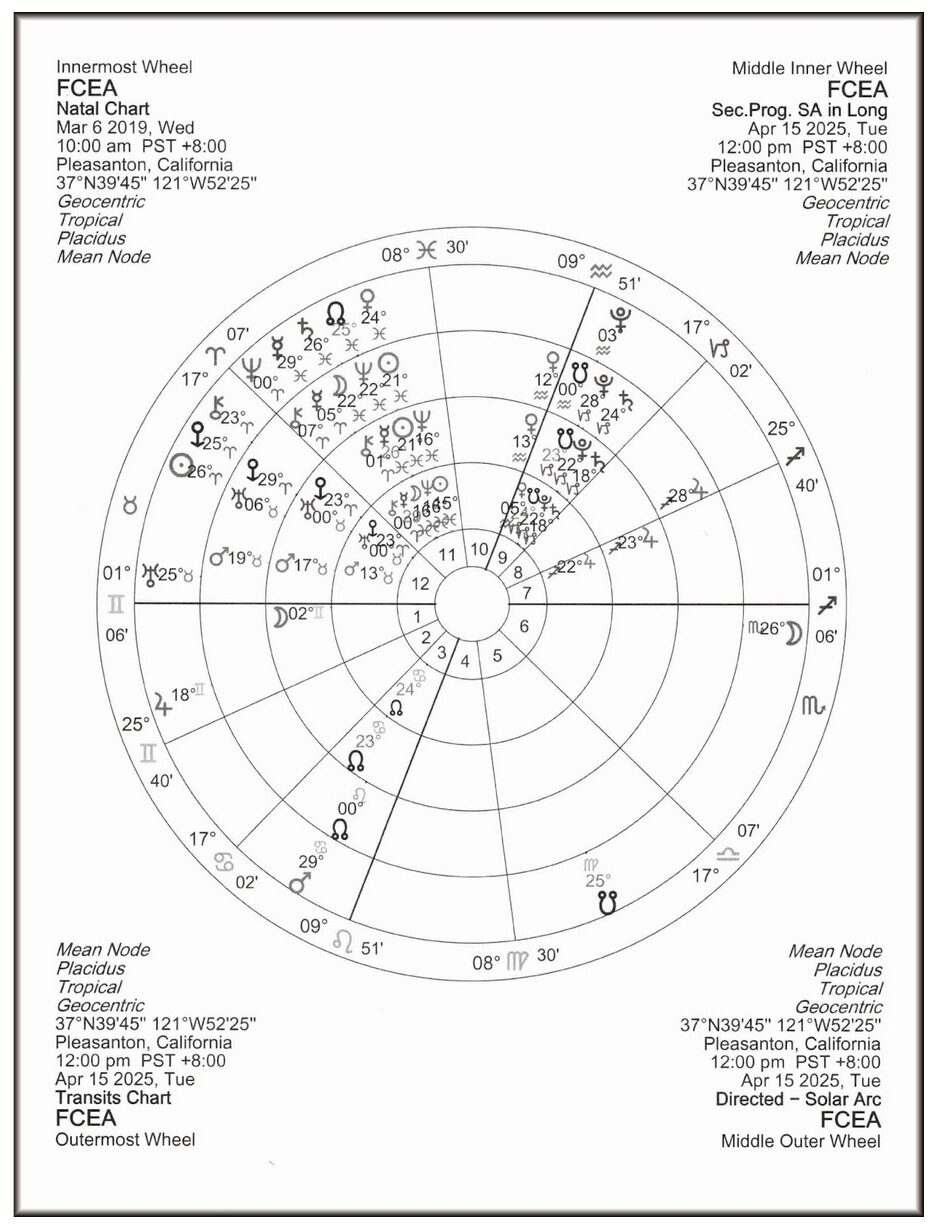
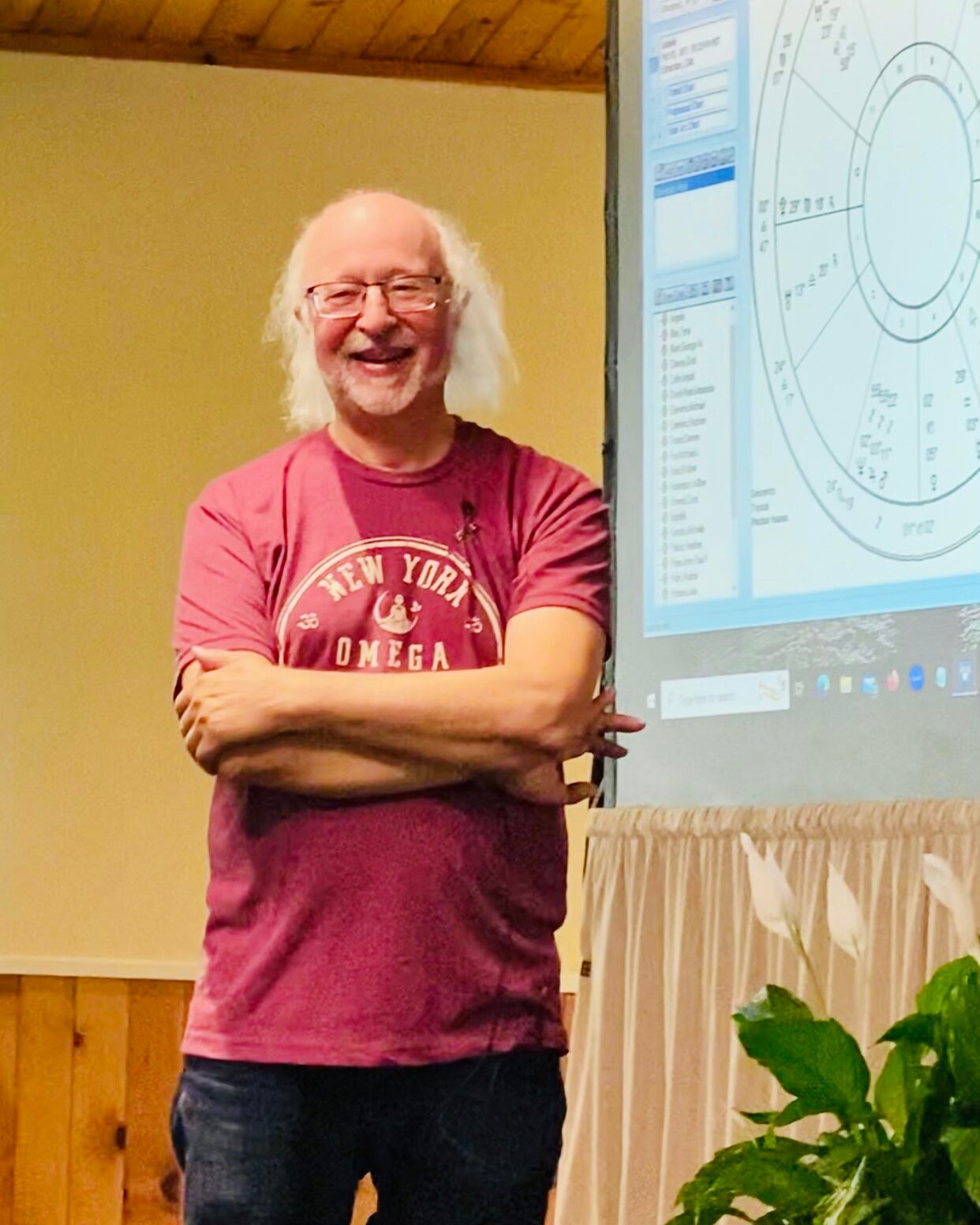
 This will be part of a weekend event sponsored by Astrology University called “The New Air and Fire Era.” In it, I’ll be offering a webinar about Neptune’s entry into Aries. Here’s my description of the talk:
This will be part of a weekend event sponsored by Astrology University called “The New Air and Fire Era.” In it, I’ll be offering a webinar about Neptune’s entry into Aries. Here’s my description of the talk:
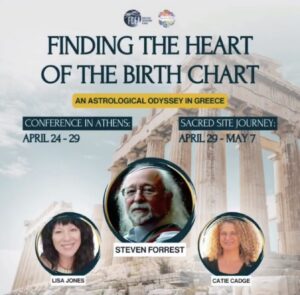
 A few lines ago I mentioned my Fireside Chat with Chip Conley. That will be a Zoom event. In June, I’ll physically be returning to his elegant Modern Elder Academy to teach. The campus is set on four square miles of magical land south of Santa Fe. Last year we had a wonderfully warm and friendly group of about twenty-five people. Some were experienced with astrology and some were not, but they all “got it” quickly. This year, I plan to talk about the current sign changes of Uranus, Neptune, and Pluto, and how each of us can best work with these fresh new energies at a personal level. For details, here’s the link:
A few lines ago I mentioned my Fireside Chat with Chip Conley. That will be a Zoom event. In June, I’ll physically be returning to his elegant Modern Elder Academy to teach. The campus is set on four square miles of magical land south of Santa Fe. Last year we had a wonderfully warm and friendly group of about twenty-five people. Some were experienced with astrology and some were not, but they all “got it” quickly. This year, I plan to talk about the current sign changes of Uranus, Neptune, and Pluto, and how each of us can best work with these fresh new energies at a personal level. For details, here’s the link: 
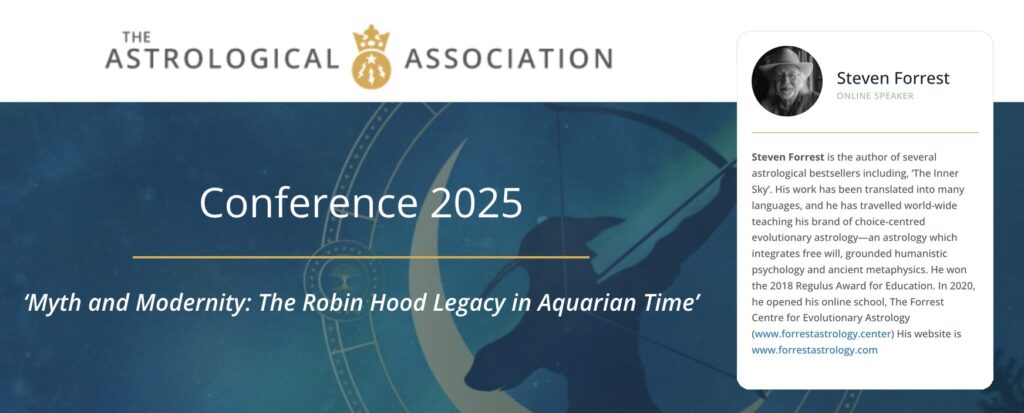

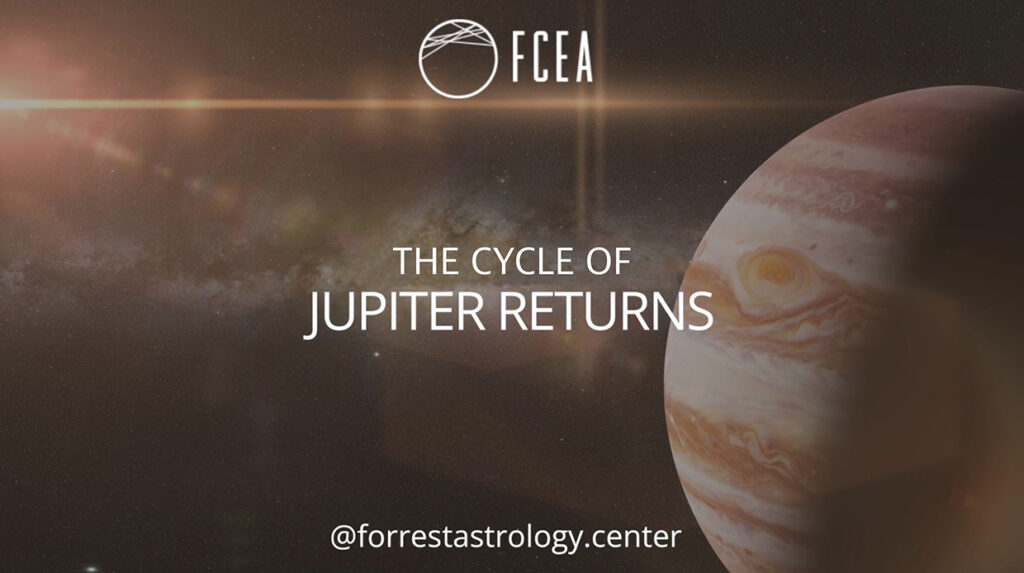

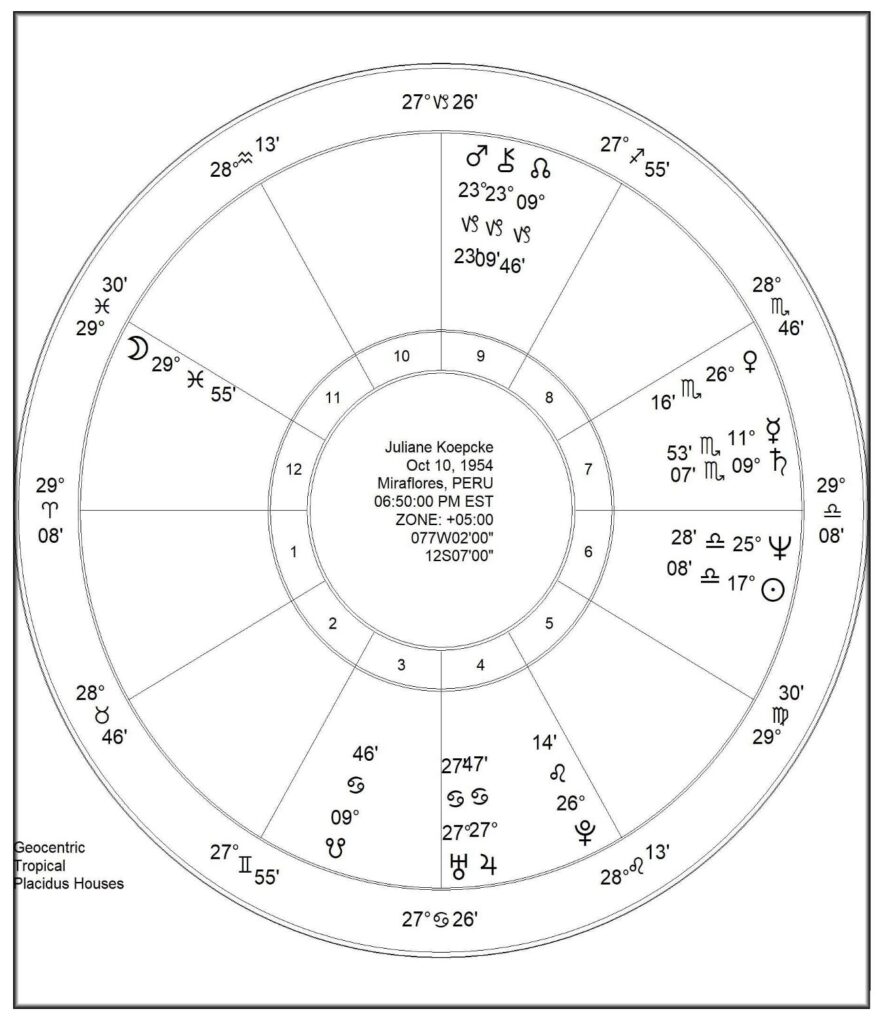
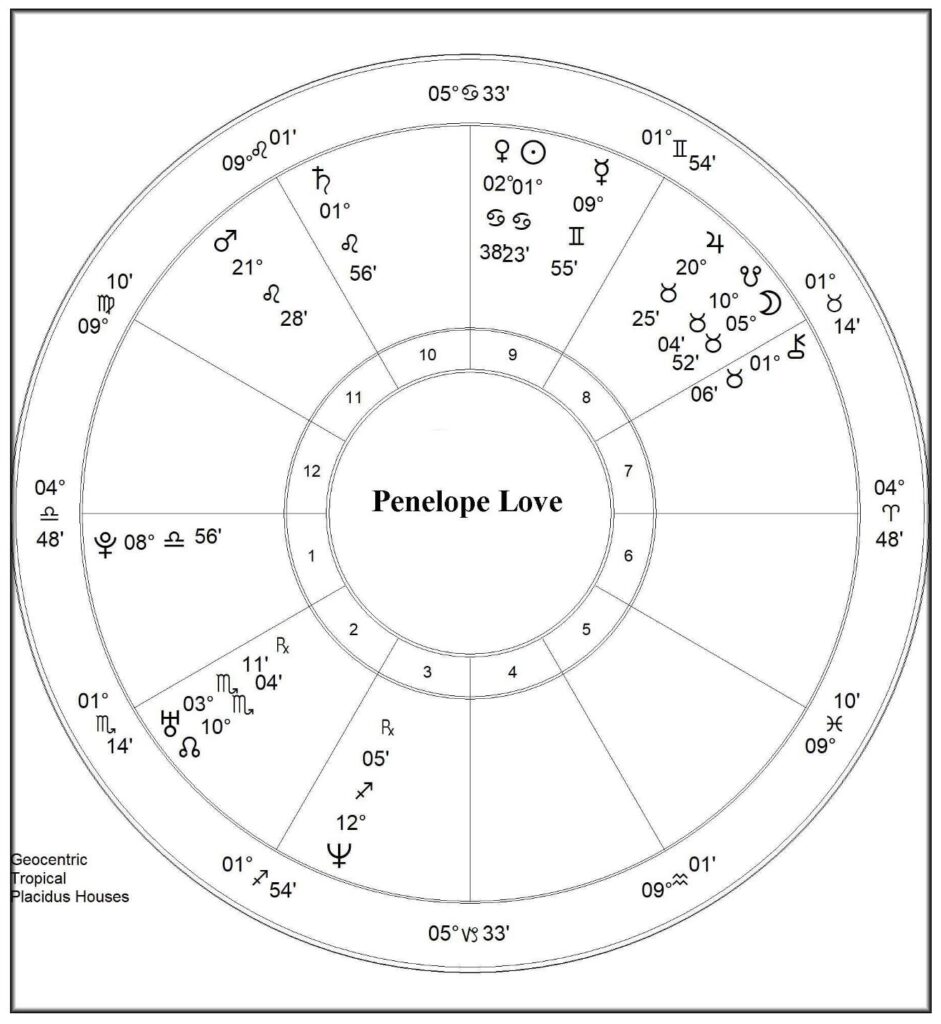

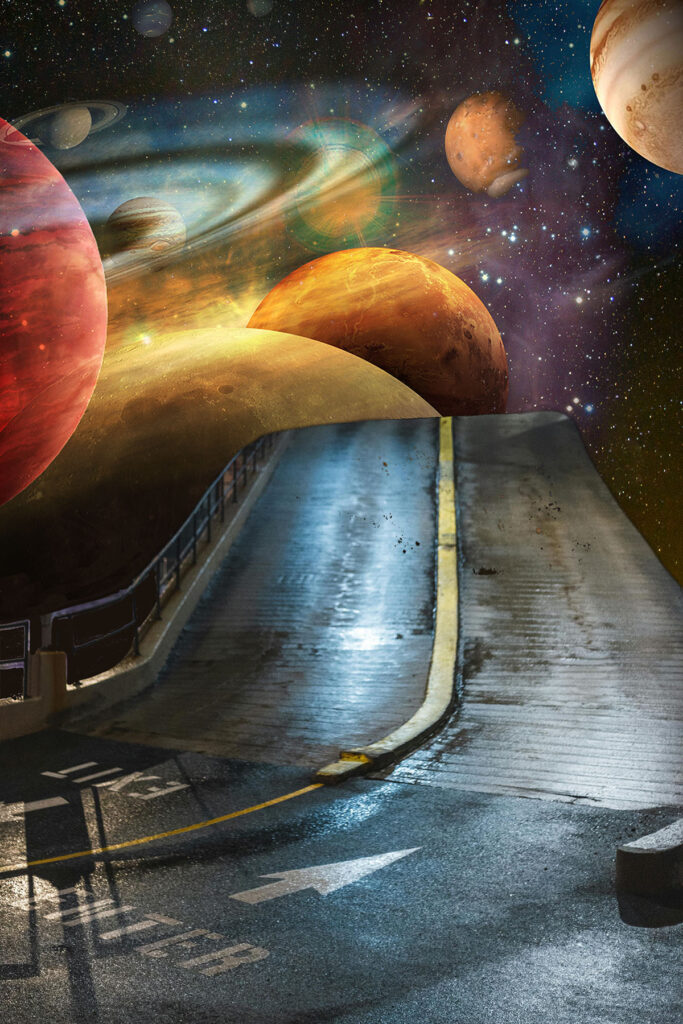 For each planet, we can create similar “on-ramps.” In each case, there are many possibilities. In a moment, I’ll make a suggestion for each one of them – but, remember, these are just suggestions. You can certainly come up with others and I encourage you to do that.
For each planet, we can create similar “on-ramps.” In each case, there are many possibilities. In a moment, I’ll make a suggestion for each one of them – but, remember, these are just suggestions. You can certainly come up with others and I encourage you to do that.

